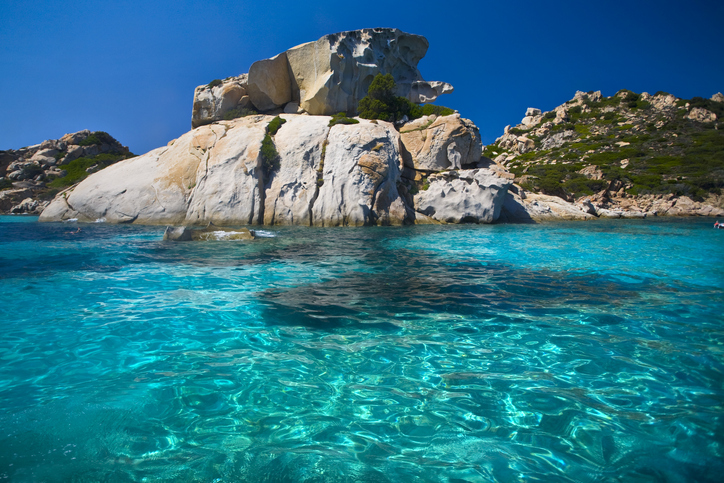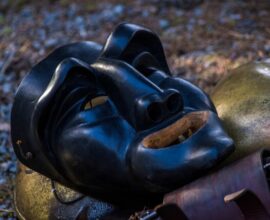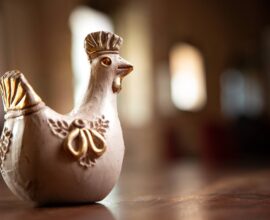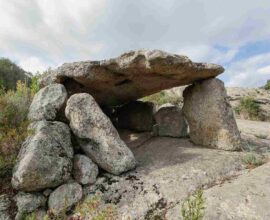10 most beautiful protected marine areas in Sardinia
Protected Marine Area: what is it, how many are there and where are they in Sardinia
Home of legends and spectacular wild landscapes colored by the able hand of Mother Nature and made immortal by the stories of men and women who have visited the island, Sardinia is a pearl in the heart of the Mediterranean which has many water treasures: the protected marine areas.
The protected marine areas contribute to making the island one of the most beautiful natural paradises in the world with a rich biodiversity where you can observe endangered species and animals of rare beauty like the pink flamingos.
The natural marine areas, or protected marine areas, are called AMP, they are delimited areas of sea which need to be surveilled and preserved, the vegetation and species living there are able to survive only with the management of activities allowed within these areas.
Among the limitations to preserve these areas, there is the prohibition or restriction of building and the limitation of fishing and withdrawal to help sustain studies and research connected to teaching and educational programs which encourage the spread of knowledge and improve sensibility towards the life forms present in the protected areas and their repopulation.
This is all necessary to avoid damaging the marine environment of the sea beds and the flora and fauna within them. Also, the coastlines are important for their natural characteristics, their geomorphology, the physical and biochemical features which mark them.
What gives the most value to the marine areas is the marine ecosystem, it isn’t only home to the geological variety of Sardinia, it also has a historic and cultural value which contributes to making the island so fascinating.
Allow yourself to be bewitched by the ten protected marine areas in Sardinia and come with us to discover them.

Which are the ten protected marine areas in Sardinia?
Dreams and traditions, sacred and suggestive, there are ten beautiful protected marine areas in Sardinia, together with the inland wonders and the white sand beaches, they are an attraction of the region.
Each marine area is unique, here we give each one space and allow you to be immersed in the beauty of the protected marine areas.
- La Maddalena: the Parco Nazionale dell’Arcipelago di La Maddalena is a geo-marine park established in 1994, it includes over 60 islands with a total land surface of 5.100 hectares and a marine surface of 15.046 hectares, the coastal perimeter is over 180 km. Some areas are completely protected, others only partially protected and allow diving but without any possibility of sport or professional fishing and there is also a boat speed velocity limit of three knots. All islands of the archipelago are considered important for the presence of rare plants, migrating birds and rare land animals.
- Parco Nazionale del Golfo di Orosei and Gennargentu: this area in the south of Sardinia was established as a protected area in 1998, it is one of the biggest naturalistic areas where the mountains embrace the sea and the Supramonte lies on the Golfo di Orosei. Rocky cliffs over the sea, the little crystalline bays, marine grottos are all part of this wild kingdom.
- Tavolara-Punta Coda Cavallo: the coast adds up to 40 km, it was established in 1997 and its territory is divided into zones: a totally protected area, a partial reserve, and a general reserve. It is the nesting land of marine bird colonies, but on the islands within this area there are also 750 flower examples and various diving areas for water activity lovers.
- Capo Caccia-Isola Piana: this area includes the Piana and Foradada islands, minor rocks and the bay of Porto Conte. It’s known as AMP Capo Caccia and has limestone headlands facing the sea. It has a strict nature reserve, a general reserve and a partial one, diving is allowed in only 5 water zones. Here you can find the famous Grotta di Nettuno which can be reached on land or by boat.
- Parco Nazionale and Area Marina Protetta dell’Isola di Asinara: the island’s surface is over 50 km² and the coastal perimeter 110 km. Alongside the varieties of terrestrial and marine fauna and flora, it must be remembered that before the Parco l’Isola was consolidated, it hosted prison structures and here there still an Austro-Hungaric ossuary dated to before the First World War.
- Penisola del Sinis-Isola di Mal di Ventre: this includes the isola di Mal di Ventre and the Scoglio del Catalano, its marine floors are partially sandy and grow poisedonia oceanica, other parts are rocks or covered with a wide variety of sea weeds. The protected marine area is divided in to three zones, a strict reserve, a general and a partial one, it also hosts a rich marine fauna and its not rare to spot dolphins here.
- Capo Carbonara-Villasimius: is in the south east part of Sardinia, also this AMP has three surveilled areas while diving is allowed only with specialised organisations, underwater fishing is banned. It hosts a wide range of marine species and its sea beds are an underwater museum of ancient wrecks lying on the sea floor belonging to the victims of the libeccio and mistral winds.
- Capo Testa-Punta Falcone: this marine area was established not long ago on the 17th of May, 2018, and this AMP has different grades of surveillance over the area. Alongside the environmental protection of this area, the AMP foundation has the objective of developing the chemical and physical biodiversity belonging to the marine and coastal areas with attention to Poseidon oceanica and the promotion of environmental education with information programs.
- Capo Spartivento: this area has been recently established and includes Capo Spartivento, the south western promontory of Sardinia surrounded by the beach called Cala Cipolla which has characteristics pine trees and junipers. Here there is one of the oldest light houses in Sardinia, the Capo Spartivento, after being restored it became a resort.
- Santuario Pelagos per i mammiferi marini del Mediterraneo: this marine area is divided between French, Monegasque and Italian territory and includes, besides Sardinia, a marine area extended to Liguria and Tuscany regions, alongside including Corsica and the Provence-Alps- French-Riviera. It’s an AMP established in 1991, with a rich presence of cetaceans because of the abundance of food in this area. It is home to twelve marine mammal species: common whale, sperm whale, common dolphin, striped dolphin, gramp, zifio, pilot whale, lesser whale, steno, orca and pseudorca.
Why visit a protected marine area?
The protected marine areas in Sardinia represent an underwater Eden for all those who wish to discover the treasures below the surface, made possible to do with the underwater activities organized and managed by AMP.
It’s possible to rent inflatable boats and explore the areas far away from the coast without disrespecting the marine area regulations or go on a boat ride organized by an authorized person who will guide you and help you discover the waters around the island and the stories connected to them.
Not only uncontaminated sea and biodiversity, visiting a protected marine area allows us to understand the history and local traditions tied to these places, it allows us to know and take care of the delicate marine ecosystem with small gestures which can make the difference and also represent a means to feed and divulge the concept of environmental education, therefore, the value of one of the most extraordinary resources on earth: the sea. A common heritage of which responsibility belongs to everyone without exception.






